Ural-4320: guns and armor
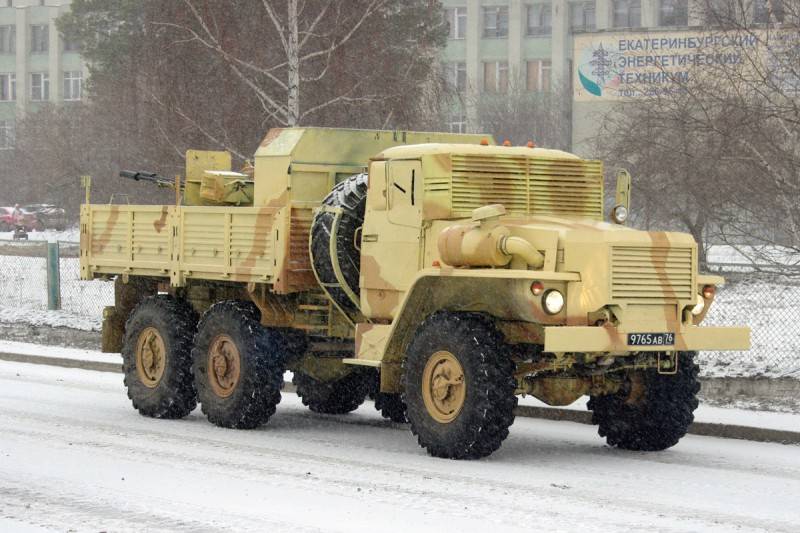
About a year ago, similar "Syrian" "Urals" were shown in Yekaterinburg. Source: tiberius66.livejournal.com
Advantages of Ural
Probably, on the second step in terms of lethality after the Grad, Damba and Prima multiple launch rocket systems, the Urals occupy the ZU-23-2 automatic cannons installed in the back. For the first time, they spoke of the need for their appearance in Afghanistan, and a real flowering awaited them during the conflict in the Chechen Republic. Moreover, it was the bonnet Ural that was better suited for this purpose than any other equipment. Firstly, the layout with the driver's cab behind the front axle, in contrast to the KAMAZ, gave a considerable advantage when undermining under the front wheel. Secondly, the mass of the “Urals” made it possible to withstand the recoil from continuous volleys of a twin 23 mm artillery mount at any angle to the longitudinal axis of the vehicle. ZIL-131 was also converted into home-made gantraki, but due to its smaller size and weight it was inferior to Ural in universality of use.
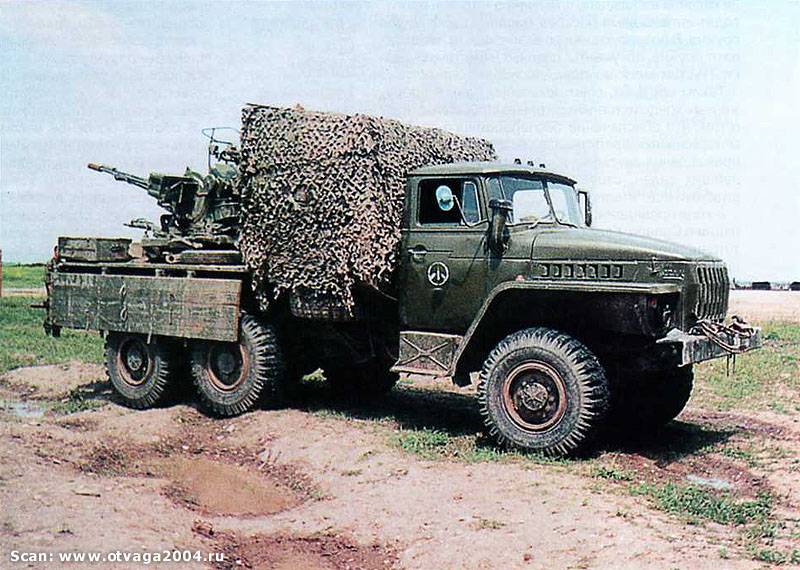
"Ural" with ZU-23-2, May 2000, Khankala. Source: otvaga2004.ru
Usually ZU-23-2 was removed from the wheel drive and mounted in the truck body by forces of military repair units. This modification of the "Urals" was not a full-time in the Russian army. However, due to lack of tanks and other armored vehicles to escort convoys to protect military commandant's offices, it was these improvised self-propelled artillery installations that were singled out. Local battles in communications have become a real problem for regular military units around the world, and Russia is no exception. In the Chechen wars, up to 40-60% of personnel and military equipment were involved precisely in the fight against militants on the routes of movement of numerous columns. Typically, security equipment (tanks, armored personnel carriers and infantry fighting vehicles) moved in the convoy every 5-10 vehicles, given the high traffic, such specialized equipment was not enough. Therefore, as a support, the Urals were poisoned with anti-aircraft installations in the cargo compartment - they were often the only armed vehicles in convoys of 5-10 transports.
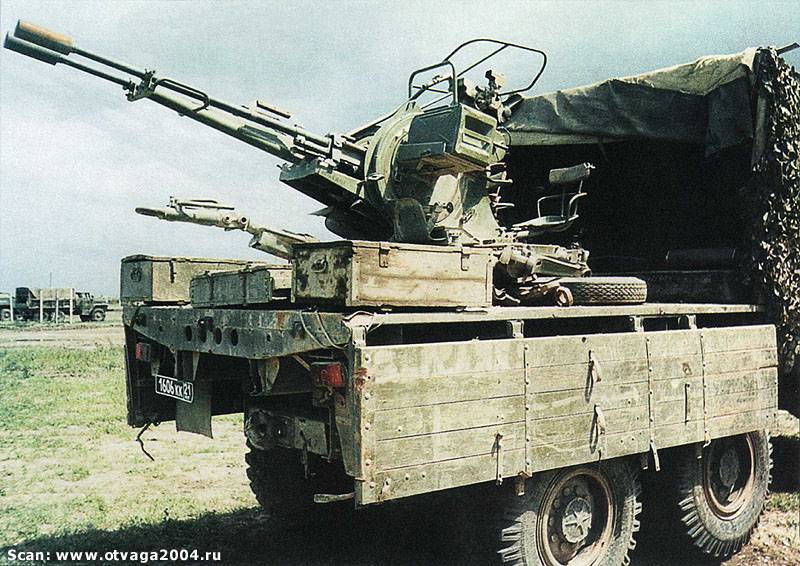
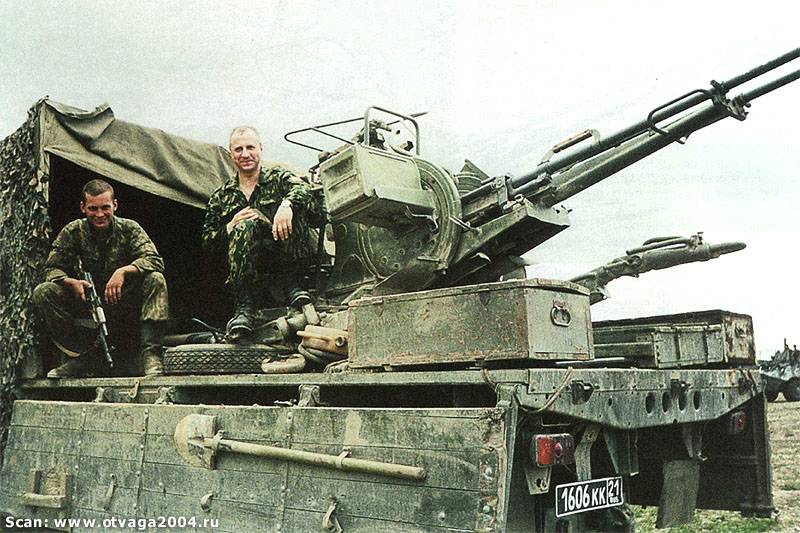
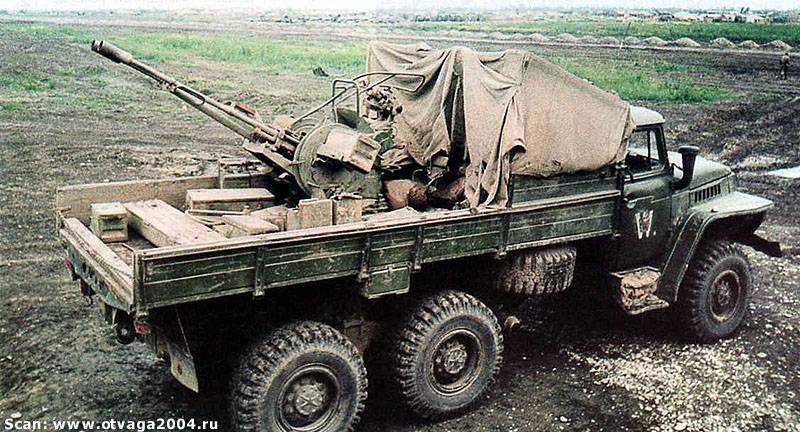
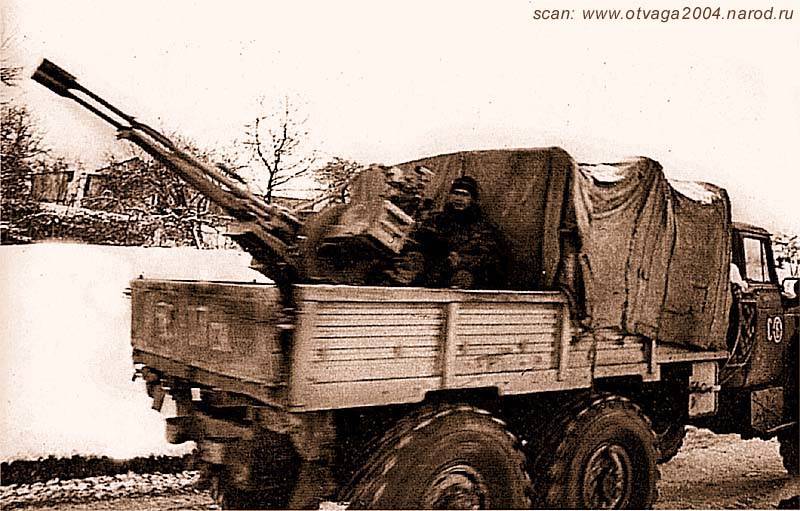
Terrible "Urals" from Khankala. Source: otvaga2004.ru
Gantraki, by the way, inflicted not only heavy damage to the enemy with their hurricane fire, but also acted as a psychological weapons. Usually a couple of three volleys of ZU-23-2 towards the enemy was enough for the bandit to leave their positions. The advantage of such mobile gun mounts was the relatively low cost and high firepower, exceeding that of the APCs and BMPs. At the same time, despite the absence of a serious reservation, statistics on losses spoke of the high efficiency of such machines. This was largely due to the fact that anti-aircraft guns could work on targets at a fairly serious distance from the enemy and it was difficult to conduct targeted return fire with small arms. At the same time, if the enemy approached the distance of conducting aimed fire from a machine gun or rifle, in most cases he was destroyed by the calculation of ZU-23-2. (It is no coincidence that in the very near future in the Russian army there will be factory dumbbells based on the Urals and KamAZ trucks - the decision to adopt such equipment was made on the basis of Syrian combat experience.) Here an excellent "anti-material" effect of a 23 mm gun was opened, allowing an avalanche of shells to destroy various shahidmobili, jeep-gantraki and other improvised technique of terrorists.
Since the time of Afghanistan, the main requirement for the construction of Ural-gantraks has been the installation of a twin gun so that the angle of fire in the rear hemisphere is at least 180 degrees. In the front of the body, about a third of its length, was a van with a tarpaulin open at the back. It stored tools, spare parts, duffel bags, ammunition and mattresses for recreational personnel. The crew usually consisted of a commander, a driver and two to three crew numbers. Of course, such a mobile gun mount open to all winds required at least local booking. To do this, in front of the body was protected by thick steel sheets or, if there was such an opportunity, hatches or fragments of armor of broken equipment. Also used were bulletproof vests hung on the seatbacks and in front of the shooter. The sides of the body were also tried to be strengthened with steel sheets, thick boards, sandbags, and sometimes even scraps of rails.
Ural changes engine
After describing the artillery installations on the basis of the Ural airborne vehicles, it is worth returning to the beginning of the 90s, when a motor plant burned down in Naberezhnye Chelny and a conveyor stood up in Miass due to a lack of power units. As mentioned in previous parts of the cycle, UralAZ engineers decided to install a YaMZ-236M2 diesel engine under the hood. This engine was a V-shaped 6-cylinder and 30 liter. from. was weaker than its predecessor from KamAZ. At the same time, due to the size of the engine, the air filter did not fit into the engine compartment of the Urals and had to be carried out onto the right wing - this was a characteristic difference between new cars with an index of 4320-10. The power-to-weight ratio of such machines naturally decreased, and as an alternative, trucks began to equip YaMZ-8M15 with 238-cylinder 2-liter diesel engines with a capacity of 240 liters. from. The motor was larger than the KamAZ-740; under its dimensions, the nose of the Urals had to be extended, which somewhat changed the initial harmonious appearance of the car. From that moment on, all the cars of the 4320 family acquired a characteristic elongated engine hood, for which they deservedly earned the nickname “Crocodiles”.
The six-cylinder YaMZ engine perfectly approached the new lightweight modification “Ural-43206”, from which one rear axle was stopped. This truck, which began life on the assembly line in 1996, was intended for the border troops and was supposed to replace the aging GAZ-66. The biaxial Ural is a dynamic machine (speed up to 85 km / h), which is characterized by relatively high efficiency and costs the military budget less money. However, the removal of the axis made it possible to place in the body no more than 4,2 tons, which, however, was quite enough for the border guards.
Ural wears armor
Ural, as one of the most warring trucks of the Soviet Army, was the first to try on a reservation. This happened during the fighting in Afghanistan and included the protection of the vital components of the machine: cab, body, engine compartment and fuel tanks. At first, local repair units were connected to this, but later the armor was already mounted in Miass itself, at 21 research institutes and a number of other nearby military factories.
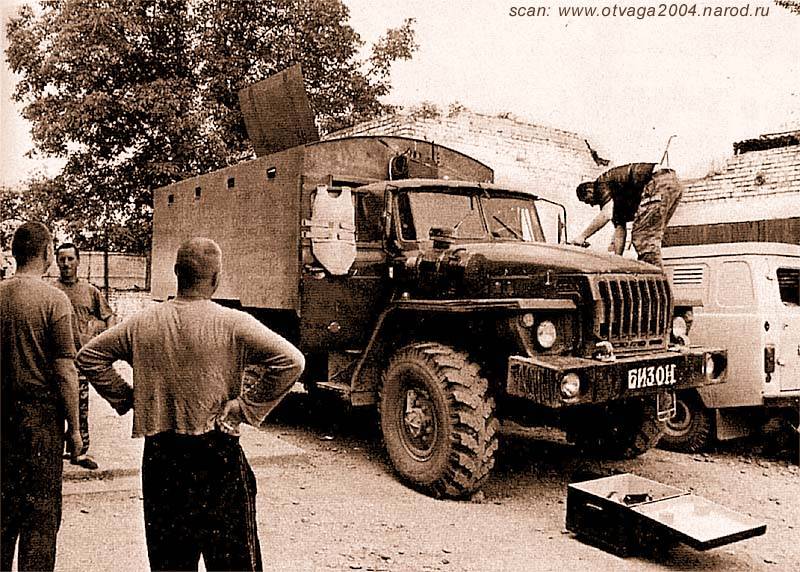
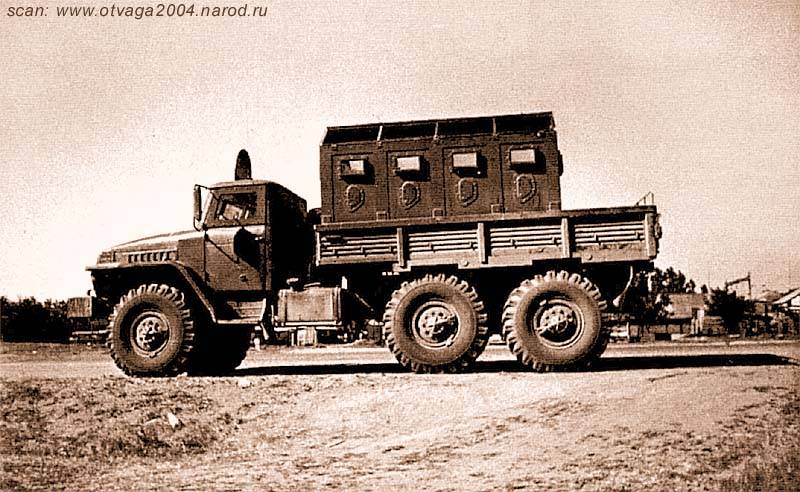
Another pair of armored Urals. Source: otvaga2004.ru
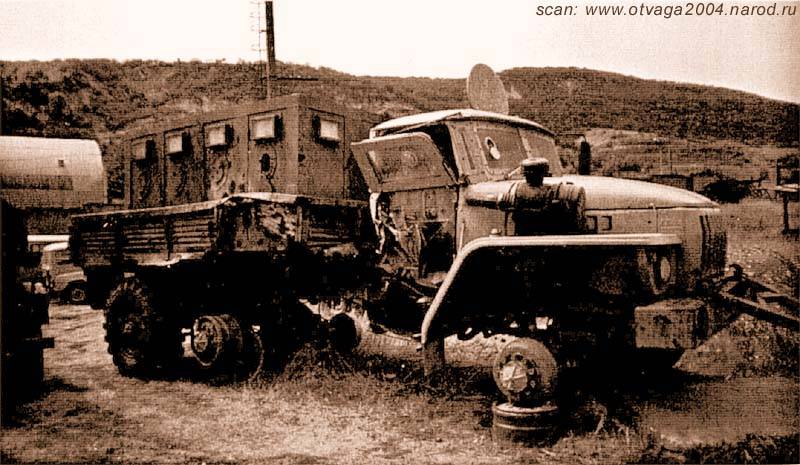
A vivid example of the sustainability of the “Urals” to undermines. The crew is alive. Source: otvaga2004.ru
The reservation logic of the Urals, developed in Afghanistan, did not undergo any special changes during the first Chechen war - they also locally reserved individual elements of the car. But since August 1999, with the start of the second campaign, the situation has changed. Now the "Urals" of the internal troops and the Ministry of Defense defended in a new way. Typical was the full reservation of the hood and cab with the installation of small bulletproof glass blocks instead of the standard windshield. An armored box opened from above was installed in the body with loopholes from the BTR-60PB, often protected in the third or fourth booking class. Entrance and exit from such an armored module was carried out through aft swing doors, and an open roof made it possible to fire above the sides. It is noteworthy that the Ministry of Internal Affairs of the Russian Federation was much more serious about booking the Urals than in the army.
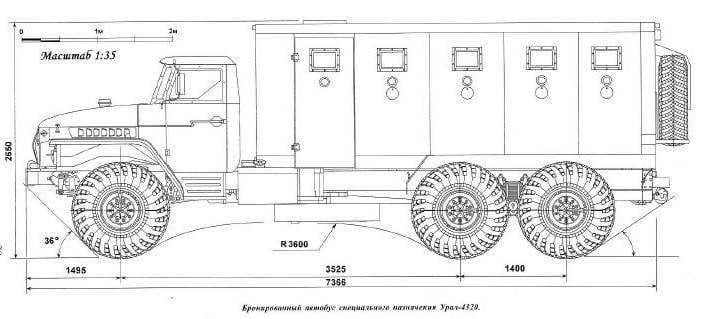
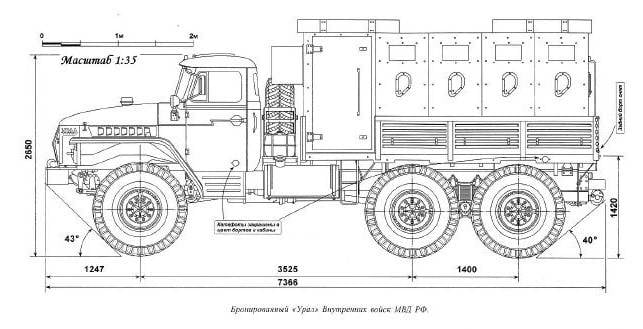
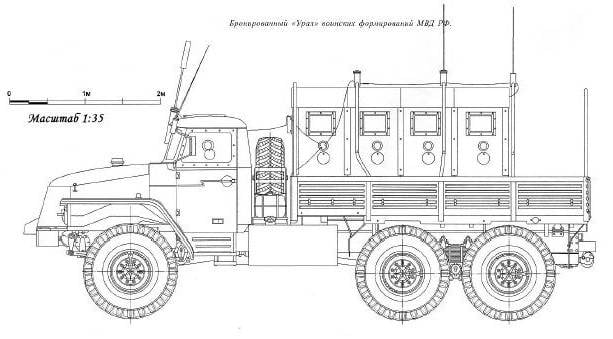
Source: Military Vehicles
Firstly, the cabin was fully armored and often equipped with a commander's sunroof. At the same time, the armor was thicker (up to the fifth booking level) than in army vehicles. How could this be explained? Internal troops could not boast of the presence of heavy armored vehicles, and there were often problems with light ones. And sometimes it was necessary to fight along with army units with a well-trained and equipped enemy. That is why the internal troops were much more attentive to the reservation of wheeled vehicles. Of course, this ultimately negatively affected the resource of the heavy Urals, but the effectiveness of such decisions was repeatedly proved in combat conditions. Not always in the process of booking the “Urals” the heat balance of motors was taken into account, which, locked in a thick armored box, often overheated and prematurely failed. In addition to thicker armor, the protected modules in the bodies of the “Urals” of the internal troops were equipped with armored double-glazed windows.
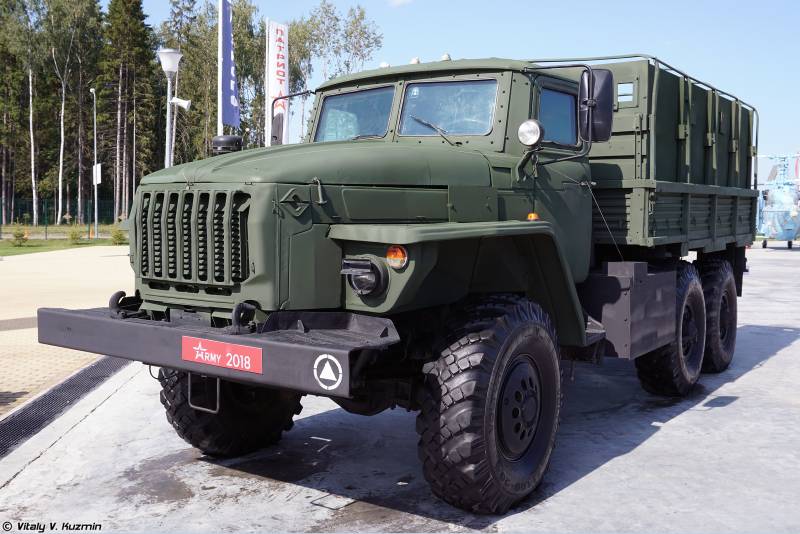
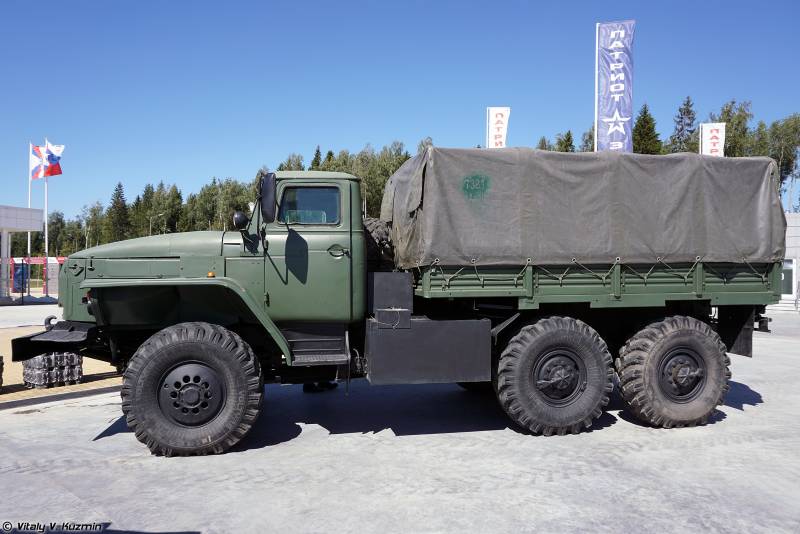
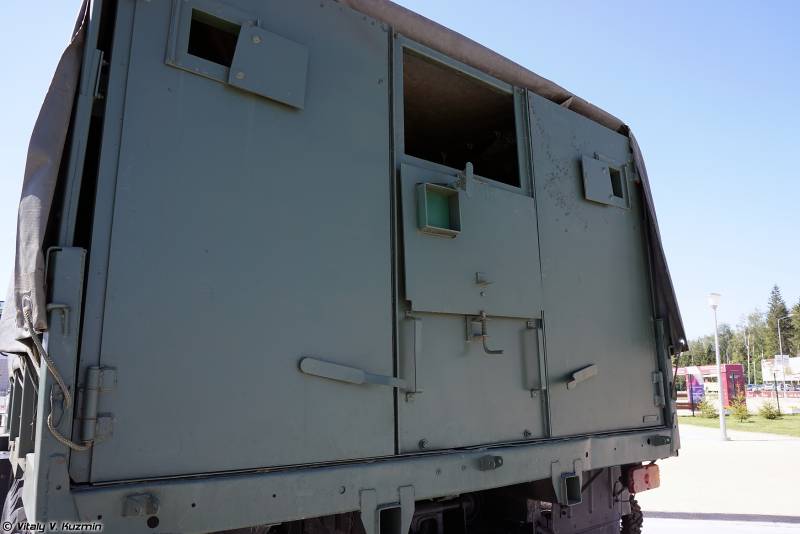
A sample of the modern armored version of the Urals. The name of the car plunges into a stupor - Ural-4320-0010-31 DKZ. Photo: Vitaliy Kuzmin. www.vitalykuzmin.net
In army versions of the protected Urals, priority could be given not to thick armor, but to the preservation of carrying capacity, since the Urals were involved in the transportation of ammunition and other military equipment. In general, during the second Chechen campaign, “Urals” made real armored personnel carriers, which are much cheaper than traditional ones, and also have undeniable advantages: the ability to carry personnel quite comfortably, high mobility, versatility and carrying capacity. The quintessential relatively inexpensive armored car was the modern Ural Federal-42590 and Federal 93. At the other extreme, the explosion-proof Typhoon-U is at a cost. In the modern Russian army comes the understanding of the need to book most wheeled vehicles, and the Ural family is in the lead here.
To be continued ...
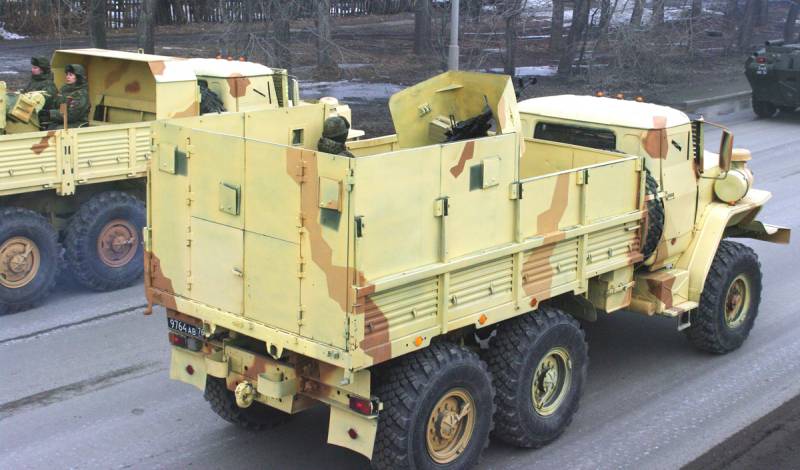
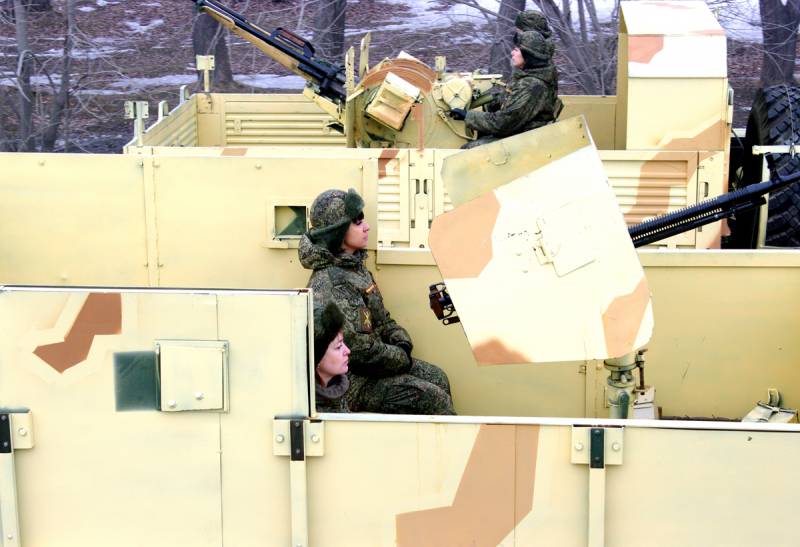
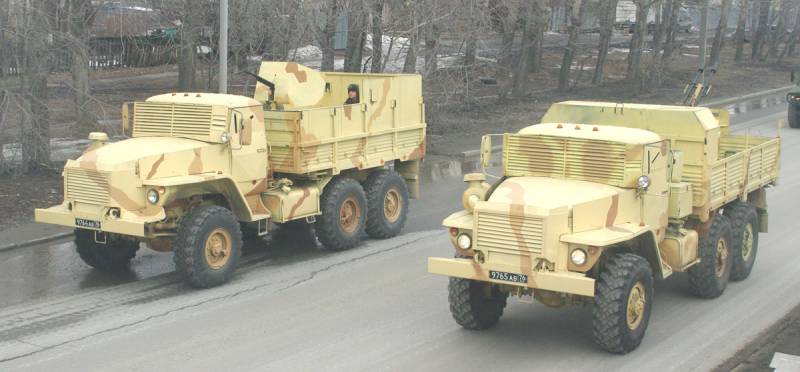
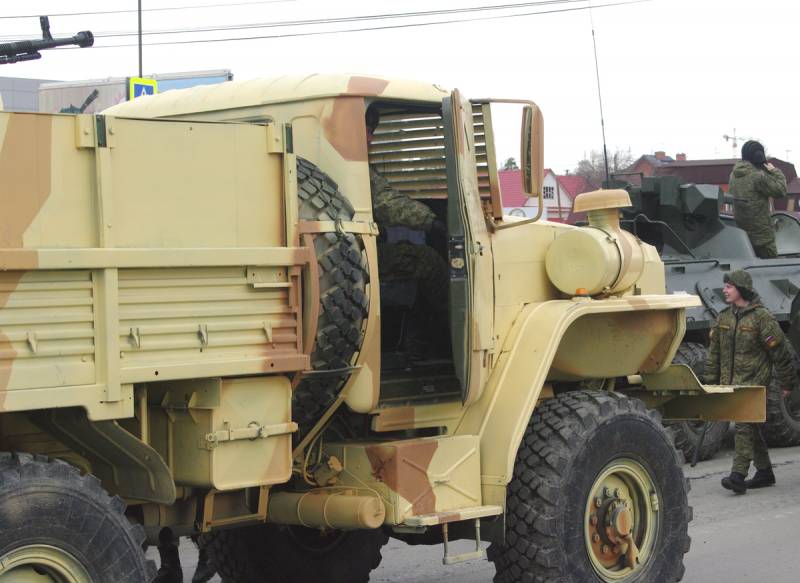
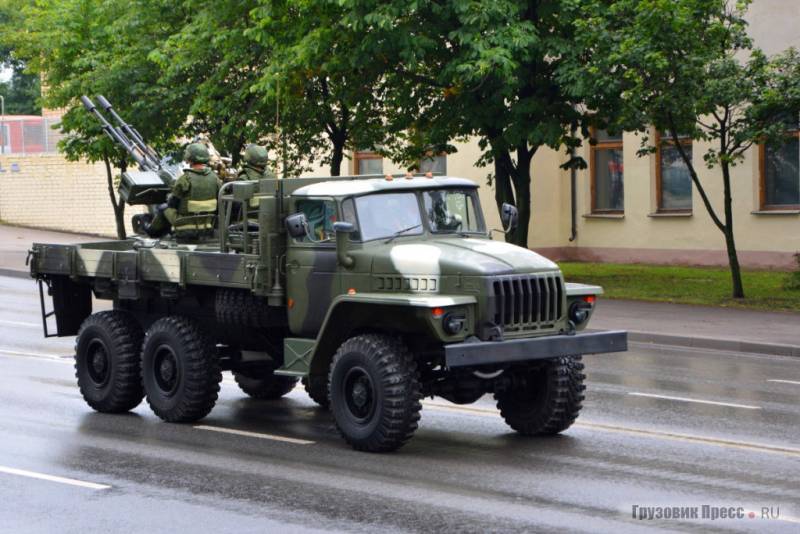
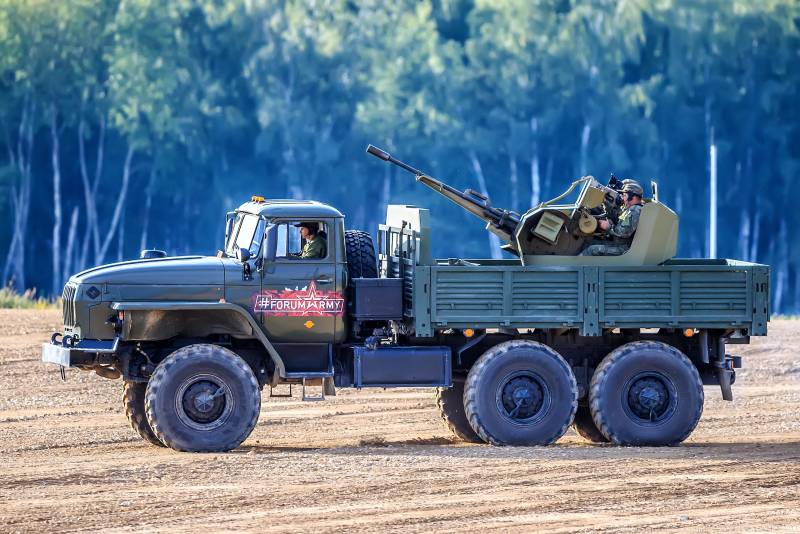
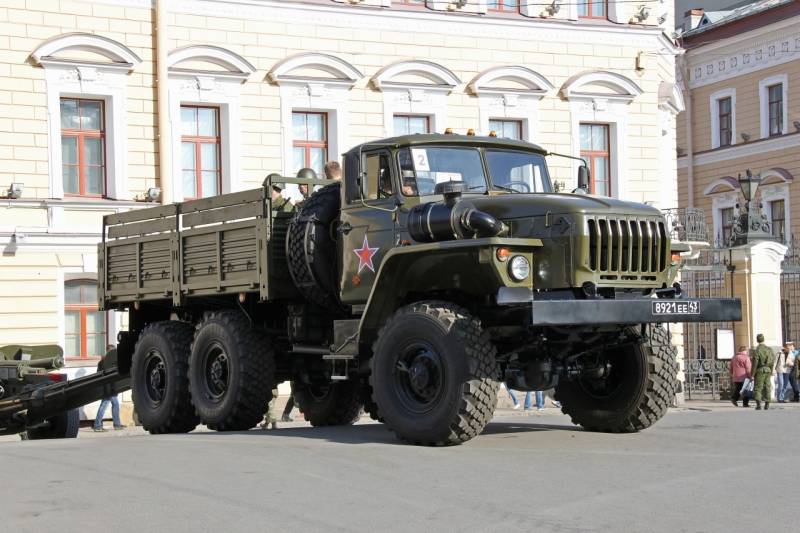
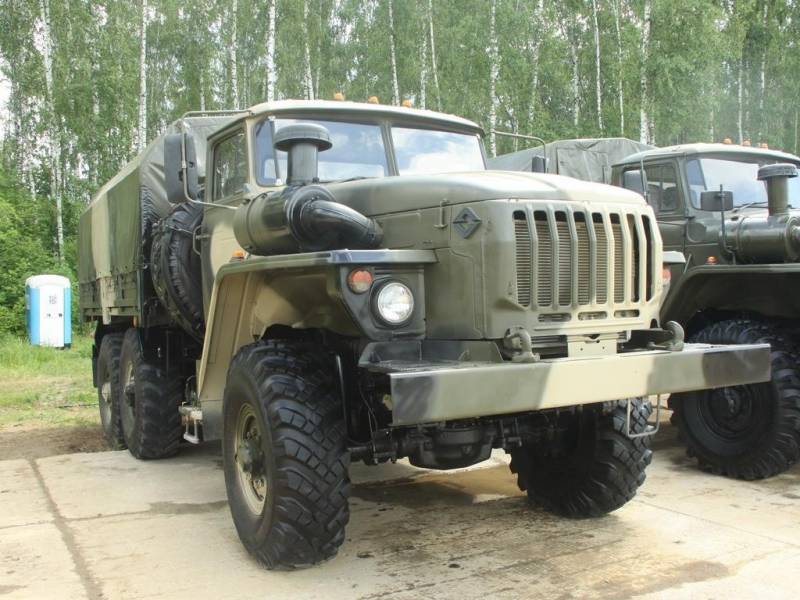
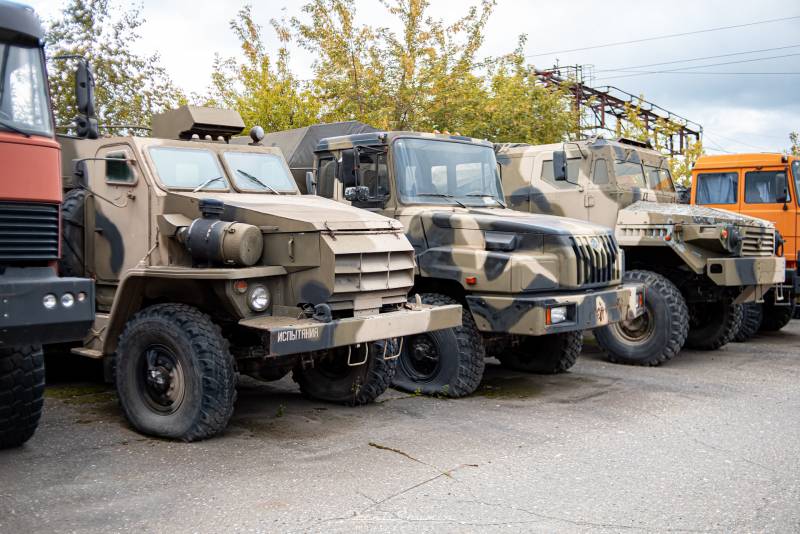
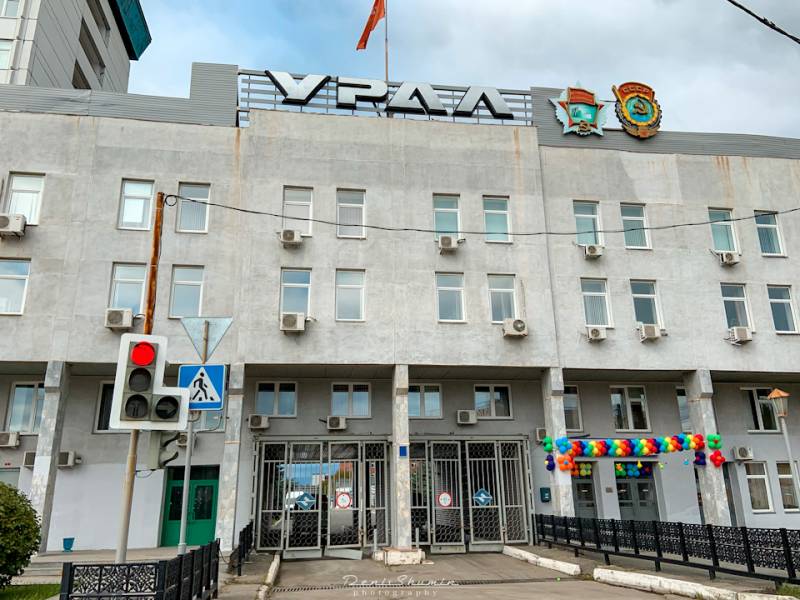
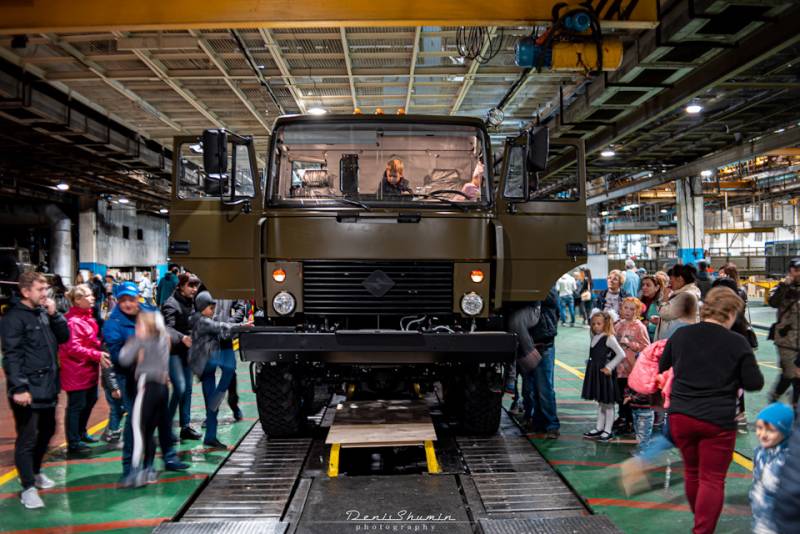
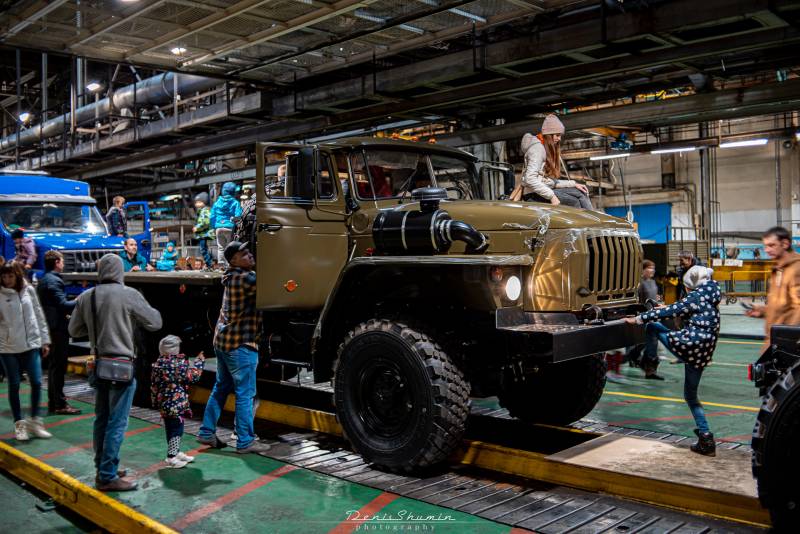
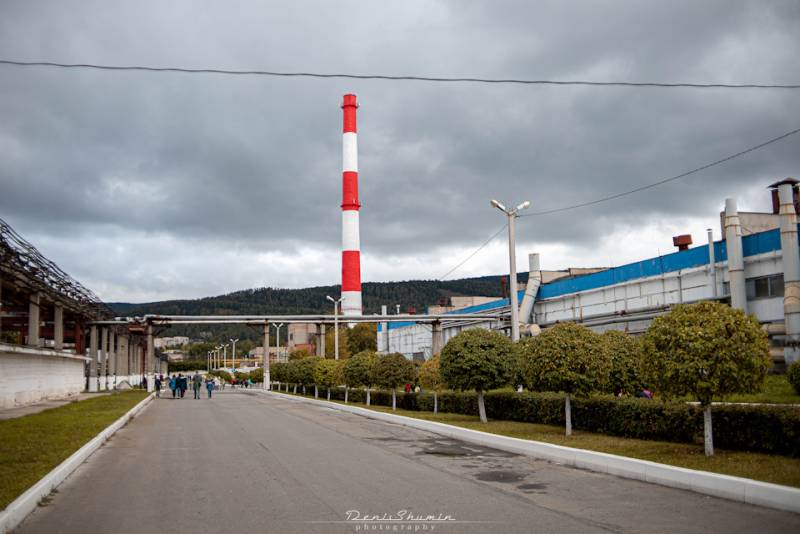
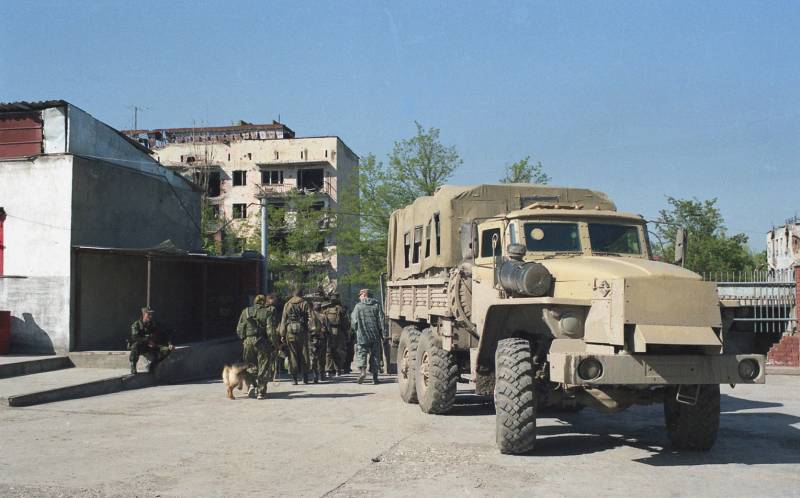
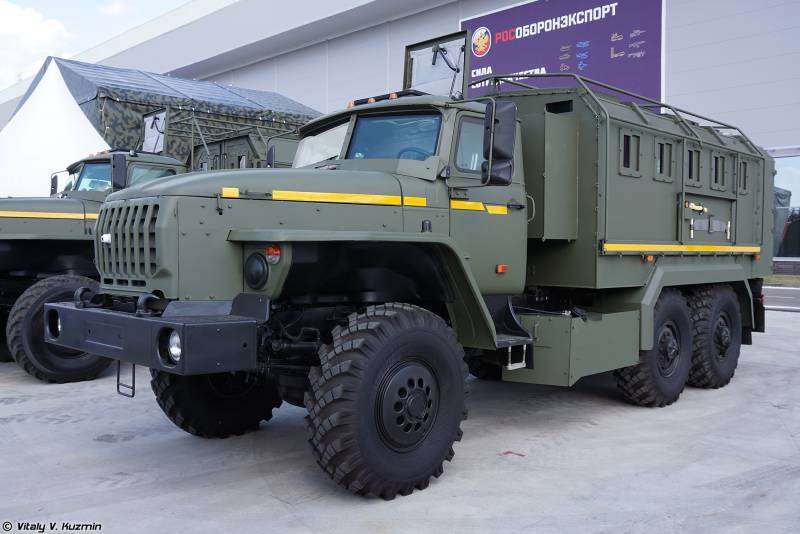
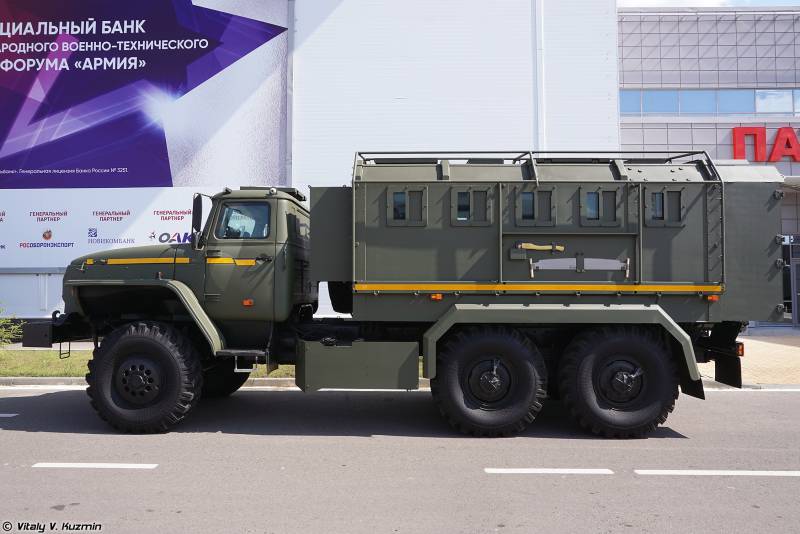
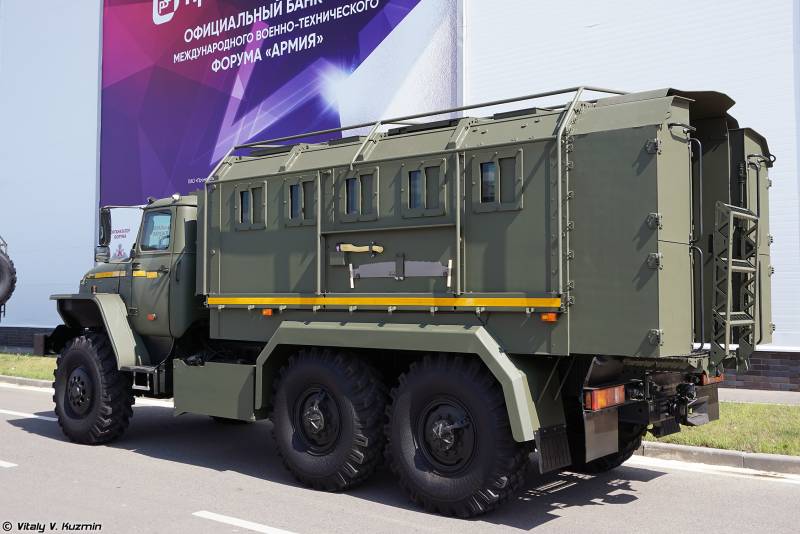
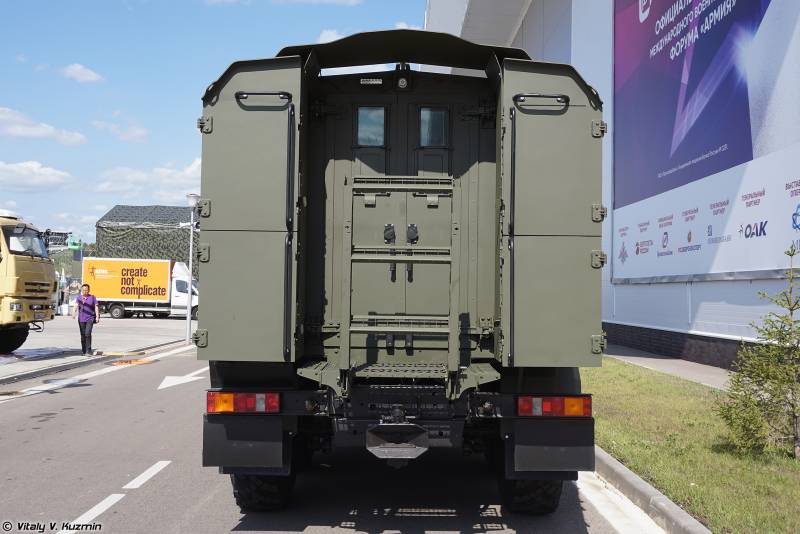
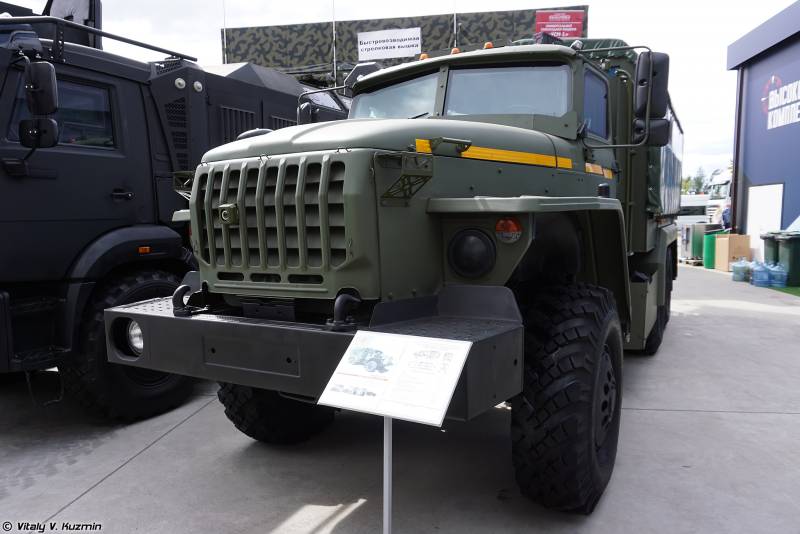
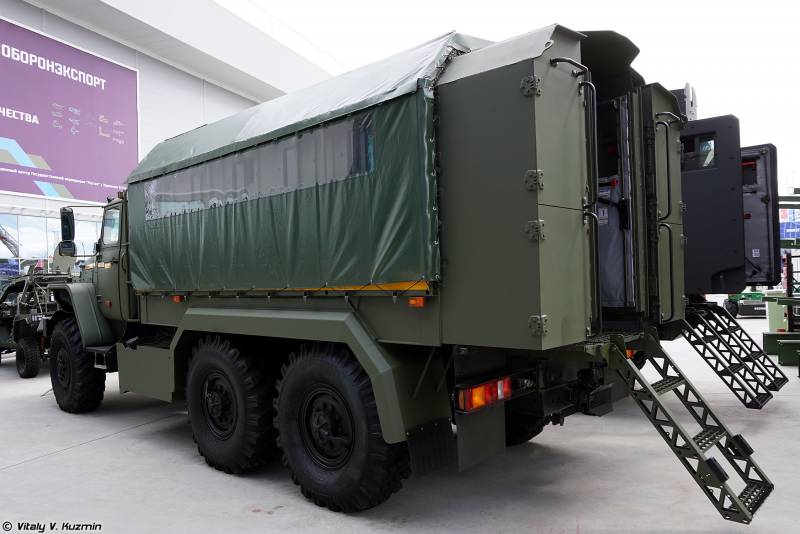
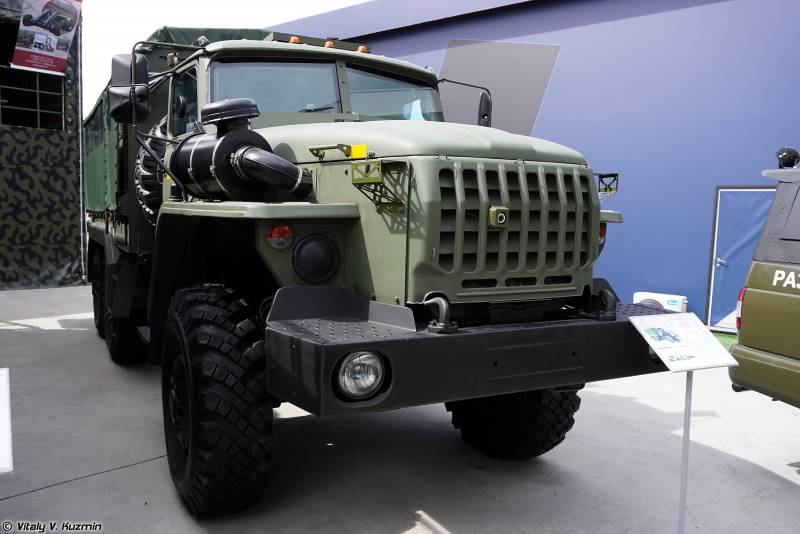
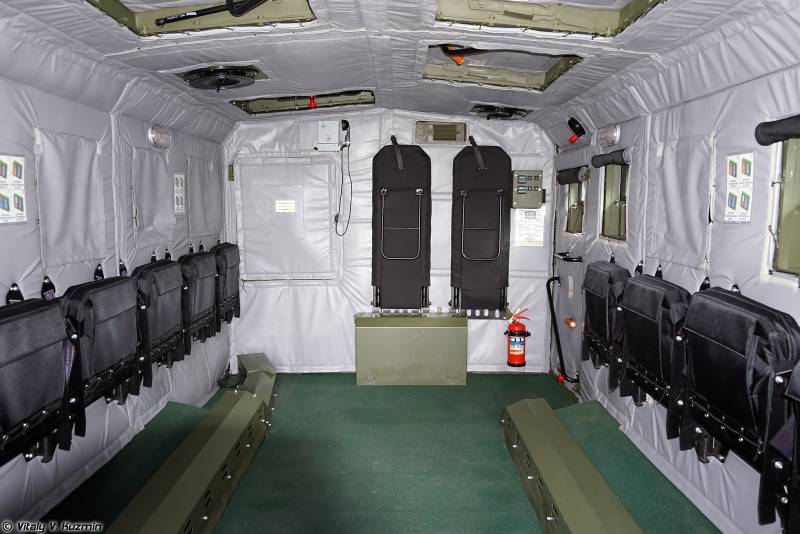
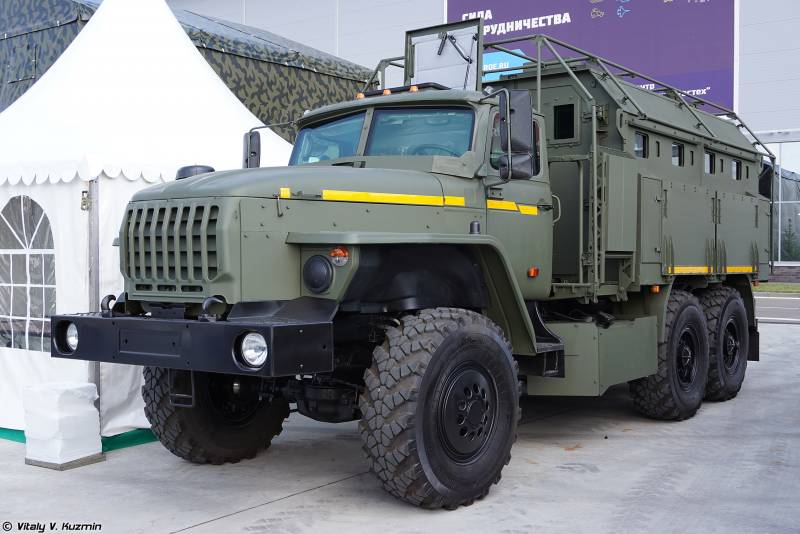
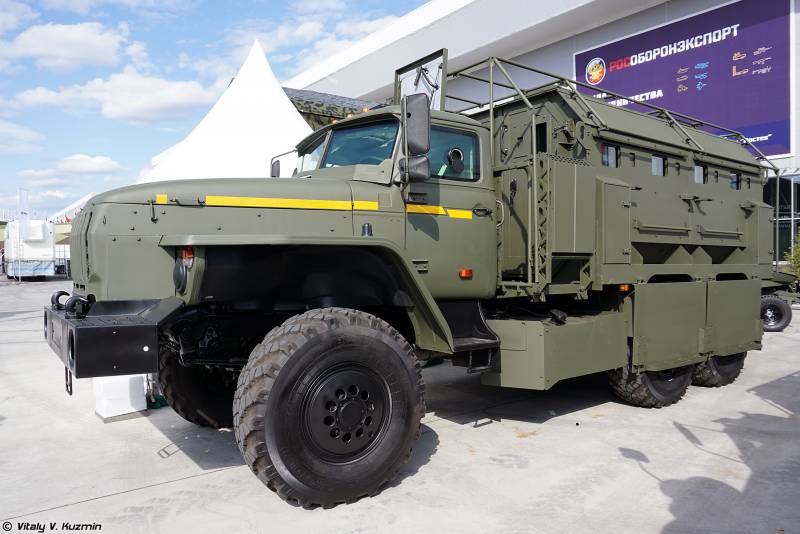
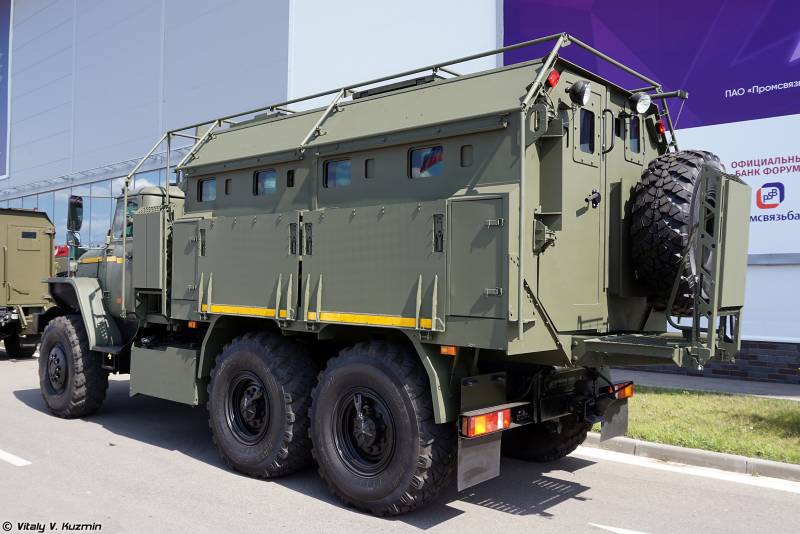
Information